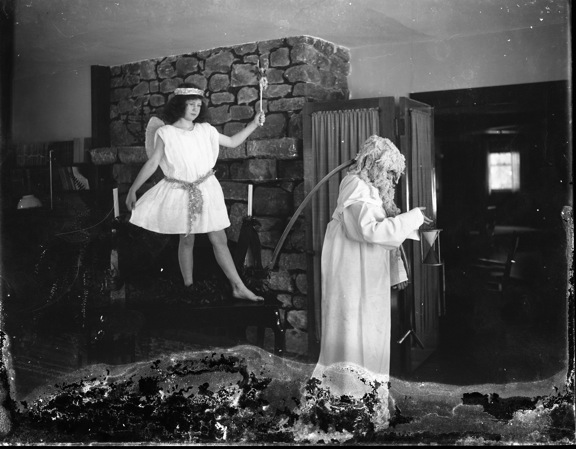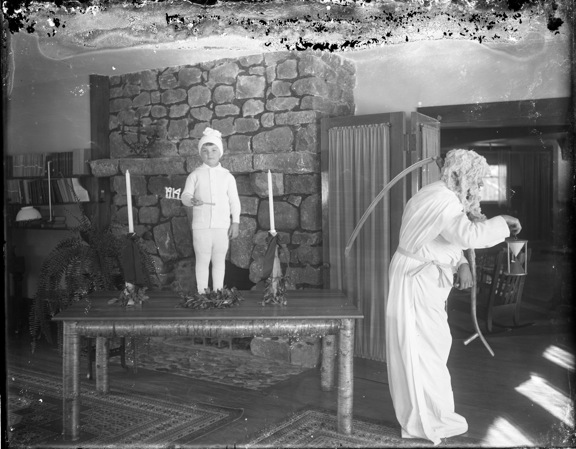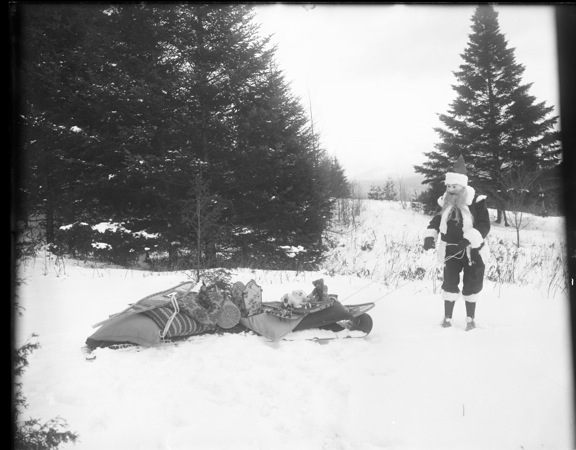IT’S OUR HISTORY: Father Time, Baby New Year

Happy new year! Father Time and Baby New Year are images commonly seen this time of year. Father Time, depicted as an old, robed man carrying an hourglass or similar time keeping device, stands near a young baby or toddler, typically a blond, diapered boy sporting a sash with the upcoming year printed on the sash. Out with the old, in with the new. Modern depictions are generally jolly with a kindly looking gentleman and a cherubic baby. Was it always this way?
Occasionally, Father Time looks more like the Grim Reaper than someone’s grandfather. He’s seen carrying a scythe, more a symbol of death than the passage of time.
Baby New Year became a recognized symbol of the New Year back in 600 B.C. However, Christians denounced using a baby to recognize the New Year, declaring it a pagan tradition. Eventually, Christians commemorated the New Year with their own symbol of new birth in the baby Jesus.
Legend tells us that at year’s end, Father Time passes on his wisdom and duties as time keeper to the Baby New Year who grows all year long eventually becoming the next Father Time.
The two together represent the cycle of a human life compressed into just 365 days. Baby New Year is the promise of hope, rebirth, new life, and a new start for the coming year.

Christmas and New Year’s Day at the Lake Placid Club was an especially lively and festive time. The first Christmas celebrations occurred in 1907 when the winter clubhouse and its stone fireplaces were draped in evergreens, Christmas balls and mistletoe. A grand Christmas tree stood in the library with beautiful candles that lit up the room. Christmas Eve began with the search for the yule log led by the Master of Merry Disports and Christmas Day began with carols sung inside the clubhouse and outside by the cottages.
From David Ackerman’s “Lake Placid Club, An Illustrated History,” he recounts the New Year’s Eve festivities (note simpler spelling): “New Year just before supper there was another effective torchlight march in Norse costume thru the forest to the Indian council fire ground for the Druid ceremonial gathering the mistletoe for the New Year. In the top of the tallest tree suddenly appeared, completely clad in white, the young Druid prince with a sickle of gold. As he cut and dropt the mistletoe, 4 priests, also in white, caut it in a white sheet. Then the prize was carried in triumfant procession back to Forest Hall.
From 9 to 12 in the Octagon there was informal dancing; and just before midnight a burst of flame north of the Solarium announst the burning out of the old year, another revived old custom. As the bell told out 1912, the Old year, Father Time, tottered round with sithe and hour glass and said his farewells in person. As he vanisht and the peel of the bells proclaimed 1913, the fairylike little New Year appeared in a glow of light with greetings.
“In the 1960s and 1970s, holiday festivities were still going strong at the Club. Childrens’ dances came into being. With the addition of the Agora Theater, the orchestra could now lead revelers in singing songs to ring in the New Year. ‘Auld Lang Syne’ was popular as were other familiar songs.
“By 11:30 New Year’s Eve, the Agora was packed, with groups of friends sitting on the dance floor, awaiting with great expectation the passing of the old year. By 11:45, the lights had been dimmed so that only the stage could still be faintly seen. The chimes commenced striking the hours of the clock, while at the right of the stage a figure could be perceived slowly shuffling to the left. Draped all in white, the bearded figure carried a scythe over his shoulder and swung an old lantern about him as he proceeded. Occasionally stopping to look behind, and off to the side, Father Time proceeded on his slow pace. As the hours continued to sound off and as 1958 neared its end, a drop bearing the number ‘1959’ slowly came down from above the stage. Father Time disappeared behind the curtains just as the midnight hour was struck, and the stage and Agora were dark. Suddenly, the ‘Baby New Year’ was spotlighted on the balcony over the huge Agora fireplace off to the left of the stage.” (LPC Notes 1959 and Lake Placid Club Life, 1967).

The images accompanying this article were, again, found in the glass plate collection we have been working on preserving all year. If you know the Father Time, St. Nicholas, or Baby New Year(s) depicted in these images, we hope you will let us know. Have a happy and healthy New Year!



